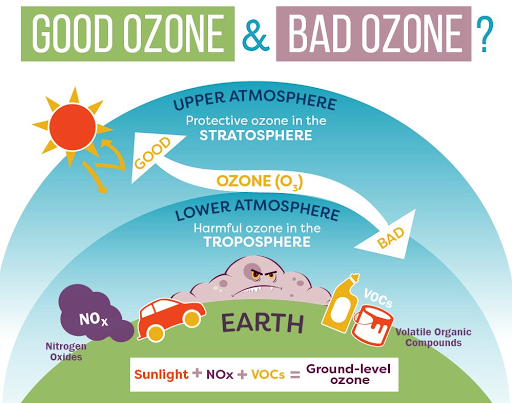Biodiversity & Environment
World Ozone Day
- 16 Sep 2021
- 3 min read
Why in News
Every year, 16th September is observed as the International Day for the Preservation of the Ozone layer (World Ozone Day).
Key Points
- About:
- After the Montreal Protocol on Substances that deplete the ozone layer signed by almost every country in 1987, the United Nation General Assembly, in 1994, proclaimed this day as the International Day for the Prevention of the Ozone Layer.
- The Montreal Protocol has led to the phase-out of 99% of ozone-depleting chemicals in refrigerators, air-conditioners and many other products.
- The latest Scientific Assessment of Ozone Depletion completed in 2018, shows that parts of the ozone layer have recovered at a rate of 1-3% per decade since 2000.
- Ozone layer protection efforts have also contributed to the fight against climate change by averting an estimated 135 billion tonnes of carbon dioxide equivalent emissions, from 1990 to 2010.
- In September 2009, the Vienna Convention and the Montreal Protocol became the first treaties in the history of the United Nations to achieve universal ratification.
- Establishment of a mechanism for cooperation to take action to protect the ozone layer was formalized in the Vienna Convention in 1985.
- In 2016 as a continuation of the global effort the Parties to the Montreal Protocol reached agreement at their 28th Meeting of the Parties in Kigali, Rwanda to phase-down hydrofluorocarbons (HFCs).
- Recently, the Indian Government approved the ratification of the Kigali Amendment to the Montreal Protocol.
- After the Montreal Protocol on Substances that deplete the ozone layer signed by almost every country in 1987, the United Nation General Assembly, in 1994, proclaimed this day as the International Day for the Prevention of the Ozone Layer.
- 2021 Theme:
- Montreal Protocol – Keeping us, our food, and vaccines cool.
Ozone
- About:
- It is a special form of oxygen with the chemical formula O3. The oxygen we breathe and that is so vital to life on earth is O2.
- Most ozone resides high up in the atmosphere, between 10 and 40km above Earth's surface. This region is called the stratosphere and it contains about 90% of all the ozone in the atmosphere.
- Classification:
- Good Ozone:
- Ozone occurs naturally in the Earth's upper atmosphere (Stratosphere) where it forms a protective layer that shields us from the sun's harmful ultraviolet rays.
- This “good” ozone is gradually being destroyed by man-made chemicals referred to as Ozone-Depleting Substances (ODS), including chlorofluorocarbons (CFCs), hydrochlorofluorocarbons (HCFCs), halons, methyl bromide, carbon tetrachloride, and methyl chloroform.
- Bad Ozone:
- In the Earth's lower atmosphere (troposphere) near ground level, ozone is formed when pollutants emitted by cars, power plants, industrial boilers, refineries, chemical plants, and other sources react chemically in the presence of sunlight.
- Surface level ozone is a harmful air pollutant.
- In the Earth's lower atmosphere (troposphere) near ground level, ozone is formed when pollutants emitted by cars, power plants, industrial boilers, refineries, chemical plants, and other sources react chemically in the presence of sunlight.
- Good Ozone:







